introduction to top 50 goat farming tips, ideas, and techniques: Goat farming is defined as raising goats for milk, meat, and fiber. This process has been going on since ancient times. Rearing goats is a lucrative business. Due to its good economic prospects, goat rearing has been gaining momentum for many years under the ultimate and semi-deep system for commercial production.
It has become a lucrative business and requires very little investment due to its high utility. In addition, the commercial goat farming business is making a significant contribution to the country’s economy and nutrition. However, goat meat is a great source of usable meat which is very tasty, nutritious, and healthy. Goat’s wool is also used for various purposes and its skin plays an important role in the leather industry.
Guide on top 50 goat farming tips, tips for selecting the ideal location, fencing tips, housing facilities, tips for choosing the right goats and diseases
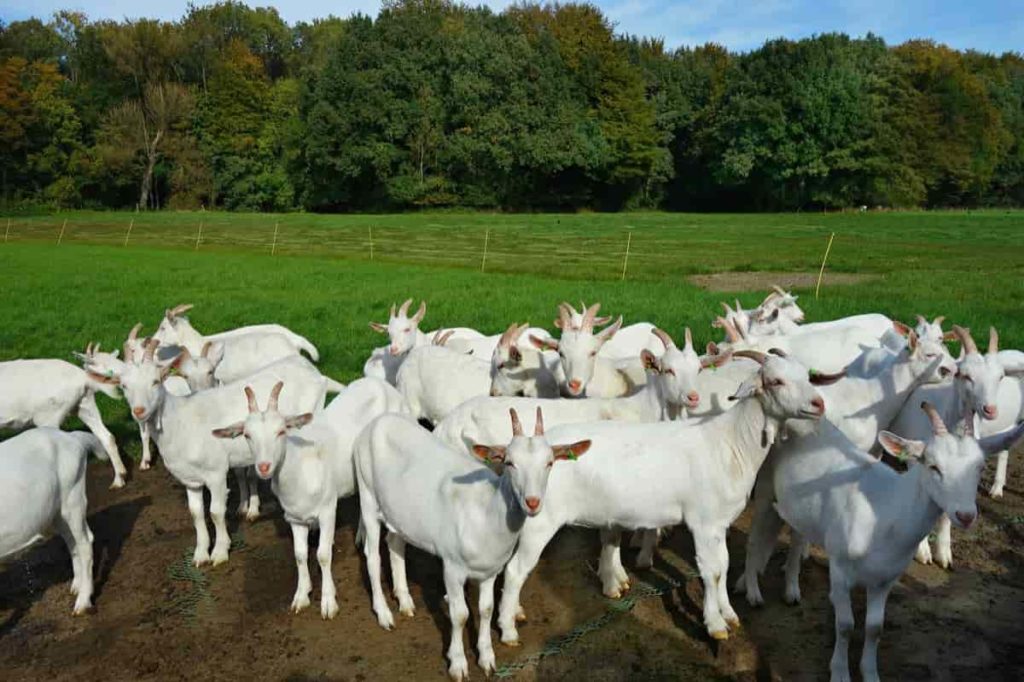
Tips for selecting the ideal location for your goat farm
- Location does not require a large area. Goats do not need much space to live because of their small body. They can easily share their living space with their owners or their livestock. In addition, goats are ideal for mixed farming with other domestic animals.
- Generally, they thrive and grow well in warm areas where water does not stagnate easily. The ideal location would be a place on the outskirts of villages or cities where the air is clean and free from pollution. Since they like to eat a lot of grass every day, the pastures should be located near the rearing shed and they should have plenty of grassy bushes, shrubs. The surface should be clean and dry and even the soil floor will be suitable except for areas with heavy rainfall, snow which makes it wet and slippery.
- Fresh and clean water should be available in the area regularly and easily as goats need to drink a good amount of water daily to stay healthy. Full-time labor for the care of animals should be readily available.
- The local market for buying essential food items, groceries, and selling meat, milk should be closed within a short travel time. Before deciding on a location, it may be best to anticipate the local population’s demand for milk and meat. Local licenses and approvals are required from the competent authorities and their costs need to be identified, to assess whether they are more competitive than other locations and not excessive. Land required for open spaces for grazing and shed construction, fences should be readily available at reasonable prices.
Housing facilities and management tips
- The main purpose of the house is to protect the animals from the sun, wind, and rain. The house should be built at a height so that it does not face water filling problems. Locally available materials such as elephant grass, paddy straw, bamboo, wood, etc., are used to build houses. Extensive accommodation arrangements are not required for smaller units. Goat sheds must have good ventilation. The slope should be arranged in such a way that the water drains easily and the place is easy to clean. 1.8 sq m space in group housing. The floor space should be 2.4 sq. mt., should be provided for the bucks. An area of 1.8 X 1.8 square meters is enough for 10 kids. However, over-storage should be avoided as it can lead to cramps and suffocation. Sick animals should be quarantined immediately as the disease spreads easily in goats.
In case if you miss this: Dairy Goat Breeds, List, Milk Production, Breeding
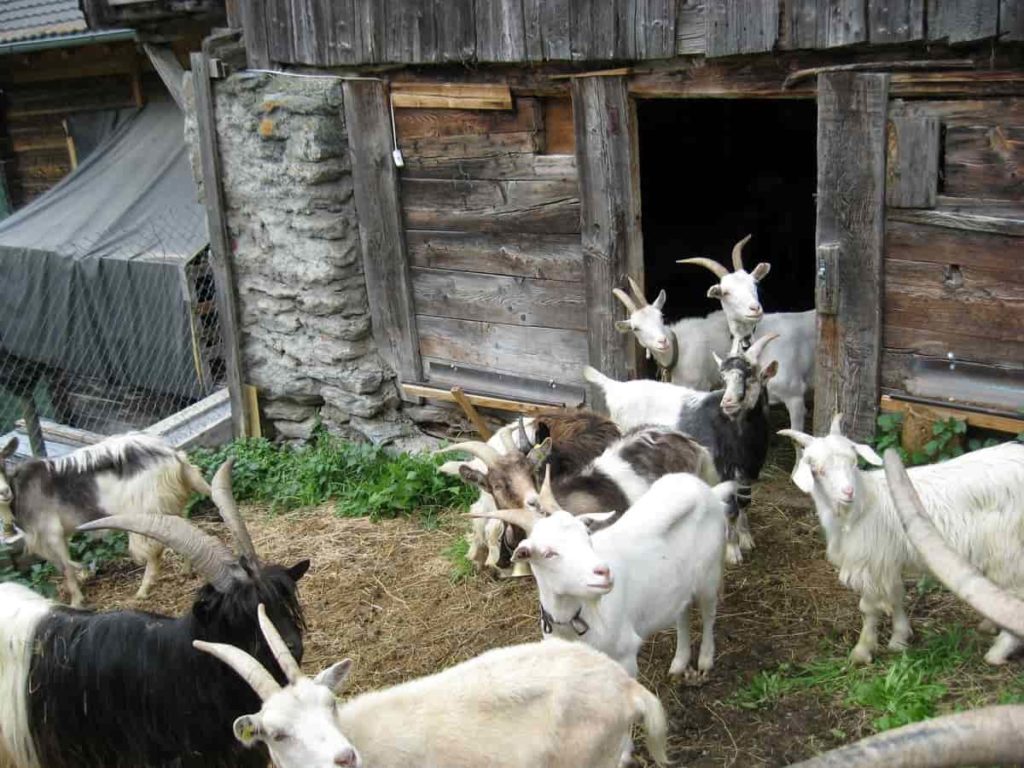
Tips for fencing goat farm
- Goats are best for crawling at short intervals or climbing over fences. A five-foot fence or more, stronger than a “no-climb” wire fence between lines, is harder to climb or slip than a fence made of horizontal beams. If you have the money and are, then make sure to make separate, strongbox pens, especially with strong and long fences. This fence will prevent your bucks from accessing your work on easter. In other words, it will prevent your goats from breeding unplanned. Significantly different-sized goats should not be kept together unless they are kept with their mother.
- Fencing for goats needs to be protected, not only to keep them indoors, but also to keep out predators – foxes, bears, dogs, coyotes, and more. Then put a fence inside the goats to keep the goats away from each other (this can be temporary or permanent).
- Temporary fencing – Temporary fencing means keeping money and weaning babies away from work. It can be poly tape or wire, electric mesh, or high tensile electrical wire. If using high tensile wire, you will need 5 to 7. Wire strips at a distance of about 6 inches at the bottom and a little more for the upper wires.
- Permanent fencing – Permanent fencing can also be made with high tensile wire, but if you aim for small predators as foxes are kept away, they can easily crawl under a six-inch-high wire. A strand of barbed or electric wire at the top will help keep goats in and more predators out.
- Your goats will need a place to go in the winter and rainy seasons. A small pole barn will work fine. Breeds of thick coats goats may be able to withstand cold temperatures but first, check with an experienced goat farmer. A three-sided wall will provide fresh air if you live in a mild climate. If your area is experiencing a cold, create a completely closed, draft-free environment, but let the goats out during the day. Goats hate puddles and wet weather. If you live in a rainy area, you may want to provide a large indoor enclosure.
In case if you miss this: Goat Markets In India, List, Where and How To Buy
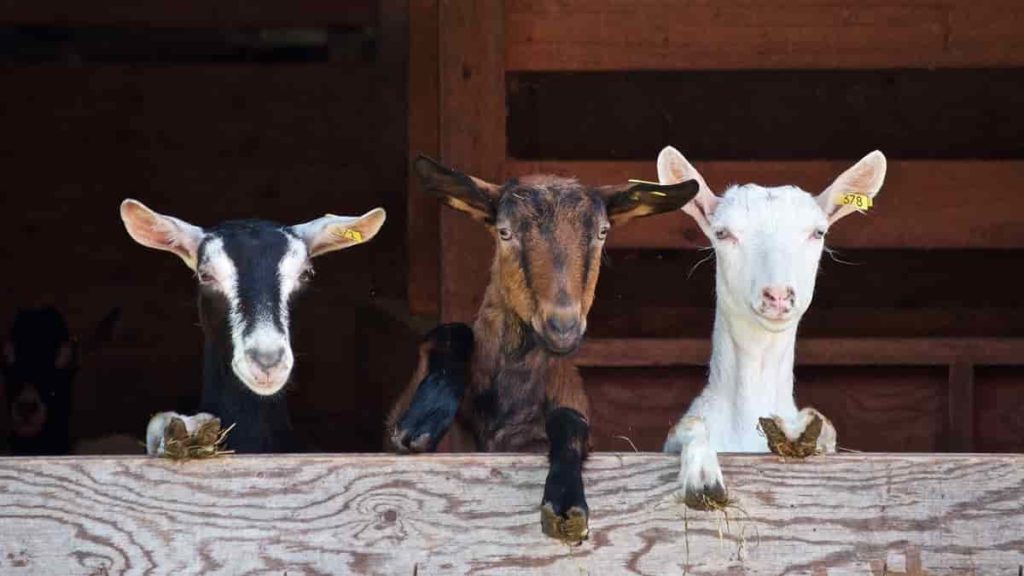
Tips for choosing the right goats
- Several goats are ideal for milk, meat, and various other purposes. Let’s take a look at the important things you need to know to choose the right goat for your goals. Next, in this initial guide to raising goats, we will talk about how to prepare and care for your goats. Different types of goats are available for farming in the world. Breeds of goats are divided into different groups according to their production. Here we are briefly describing the different types of goats.
- Dairy Goats – If your goal is to produce milk, cheese, and other dairy products, you may want to choose a dairy goat breed based on some factors. Every breed of milk has a slightly different taste, so that’s one consideration. Their attitudes are different as well as their milk.
- This breed of goat is famous for its milk production. Saanen, Toggenburg, Barbari, Jamunapari, Alpines, LaManchas, Nigerian Dwarfs, etc., are high milk-producing breeds of goats. Some dairy goats are also suitable for meat production.
- A favorite Nubian goat’s milk. The Nubians are one of the most charismatic goat breeds out there, but they can be quite loud and aggressive. Another good breed of goat is Oberhasli. In general, they are a very cute breed of goat with a unique shape. They even make well-packed goats.
- Goat meat breeds – Although any goat can be used for its meat, the two most popular meat goats are Boer goats and Kiko goats. Boer goats are a strong breed with a white body, brown head, and backward curved back. Some people say that Boer goats are the hardest and easiest meat to raise while others prefer other breeds of meat goats.
- If you raise Boer goats, make sure they have plenty of food and look for food (trees and plants) because when they graze down, they eat very close to the ground. Insects and parasites cause problems. Kikos are slightly smaller than Boer goats, but they are also excellent meat producers. They can better sustain themselves in harsh conditions with very little input from goat owners. There are many other breeds and mixed breeds that also produce good meat goats. This type of goat is very meat-productive. Some goats produce good quality meat. Boer, Mato, Black Bengal, etc., are some of the high meat productive goat breeds.
- Fiber goat breeds – If you are looking for soft goat fleece that goes to Cashmere and Angora, then you should look for Angora, Pygora, and Cashmere goats. These goats are equipped with a thick undercoat, which is perfect for yarn. These are the best goats for producing fiber, and it comes down to personal preference in choosing. Goat fiber production is a popular and thriving business for many people.
Follow these tips to buy goats
- Choosing the right goats is not an easy task. No one should ever “go out and buy a goat” without doing some homework first, otherwise, you will waste time, effort, and money on it later. Do your research, it involves many steps.
- Do your homework – Firstly, start by reading a variety of goat-related websites and forums online. Ask other goat owners about their experiences with different breeds, but always get information from different people because breeds that work well for one person may not work well for you.
- Narrow Your Focus – Secondly, be clear about what you want from your goats. If you like milk and cheese, you don’t want to waste your time with Boer goats. If you are looking for meat, there is no way to get a pygmy.
- Lastly, be realistic about your available time and budget. Find goats that are healthy without any problems. This is especially important if you have a full-time job outside of farming, in which case a goat that requires constant monitoring, care, or care of expensive animals is not a good choice. Consider your budget when choosing goats.
In case if you miss this: Goat Farming In West Bengal- Loans, Subsidies
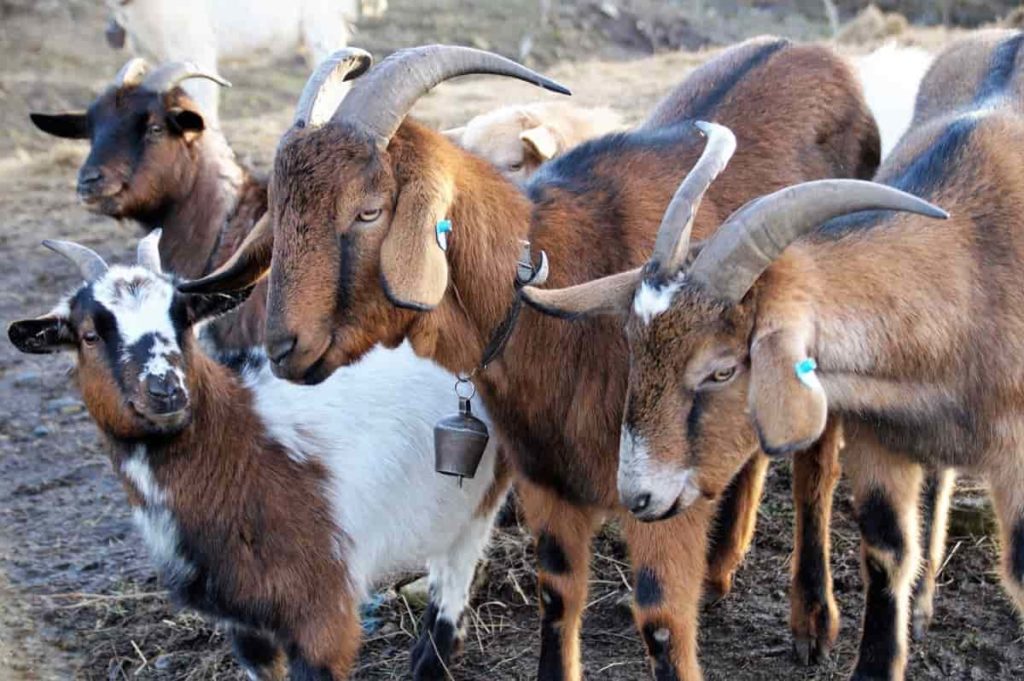
Equipment needed for goat farming
- Goats are some of the basic equipment needed for goat farming. They also have special equipment for milking, meat, fiber, or kids.
- Goat feeder
- Goat water trough
- Pitchfork
- Wheelbarrow
- Goat record book
- Goat hooves
- Serrated goat clippers
- Microchip
Breeding strategies formulation for improvement of goat
- In the commercial goat farming business, modern farmers are using artificial insemination systems for breeding. It is well suited for large-scale commercial goat farming. If you are just starting with some goats then you should use natural goat breeding. If you are interested, you can contact any of your nearby organizations. A good breeding strategy is an integral part of the genetic improvement of goats for meat, fiber, and milk production. When formulating breeding strategies for the betterment of goats, the formulators should take into account the following criteria;
- Adaptation of breeds to local agro-climatic conditions.
- The socio-economic condition of the farmer.
- Market demand.
- Availability of good quality bucks.
Diseases and vaccinations tips in goat farming
- In general, veterinarians play an important role as there are chances for goats to contract diseases. Then, they can help in disease control and management to avoid losses. They can help control and manage the disease to avoid harm. They will diagnose diseases and prescribe vitamins and supplements to keep your animals in good health, especially in stressful situations such as weaning.
- Goats are highly adapted to almost all types of agro-climatic conditions and conditions. They can withstand high and low temperatures all over the world and live happily ever after. Additionally, they can withstand warmer climates than any other animal. Goats also have fewer diseases than other domestic animals.
- Goat health plays an important role in creating a profitable business. However, diseases are less common in goats. But there is adequate and adequate veterinary service on your goat farm. It would be better if your goat farm is located near any veterinary service center. You should store essential medicines and vaccines on goat farms.
- Always be aware of your goat’s health and take good care of it while providing good housing and nutritious food. Vaccinate your goats regularly every year to prevent various diseases and health problems. Your adult goats will need an annual vaccine for enterotoxemia and tetanus. They should be infested with insects and should be protected from ticks and lice every fall and spring. Regularly trim the hooves to prevent all types of foot injuries. As a beginner goat farmer, you should always be aware of your goat’s health.
- Always keep the contact numbers of your nearest doctor, so that you can call him immediately in case of any emergency. Also try to learn how to cast males, make horns, and slaughter goats for meat (learning them will save some money, but not necessarily). Always keep a record of your farm’s activities, including birth dates, breeding dates, vaccination or medicine dates, food costs, milk or meat production, and more. That way you can make your goat farming business more profitable.
Tips for goat’s feeding and water equipment
- The amount of food and type of feeding equipment depends largely on your area, housing, and fencing. If you are going for a traditional wooden or wire fence, you can put feed buckets or troughs in your fence. If you have an electric fence, you will probably have some kind of housing inside the fenced area where you can install feeders. Other important considerations are water and grass feeders. If your area is experiencing severe winters, consider buckets of warm water. This will make things easier for you, so you don’t have to change the water all day long in the cold. About herbivores, goats (especially pregnant goats) should never encounter loose grass. This can lead to serious health conditions such as bloating and miscarriage. You want to make sure the grass stays dry and away from the ground. For this, make or buy covered grass feeders that keep the grass at a considerable distance from the ground.
- Goats are careful eaters and can tolerate more bitterness than other animals. Therefore, they can grow on agricultural by-products, waste, and other such food. In addition, they are strong and can withstand all kinds of weather conditions. Their tongues are suitable for grazing and their upper lips are mobile. So they can graze on very short grasses, shrubs, bushes, and trees. Goats should be provided legumes besides pulses, wheat, maize, etc. They generally prefer leguminous fodder over straw or corn silage. In addition, they need at least 14-15% protein as well as high mineral compounds such as iodized salt, bone meal, zinc oxide, ferrous carbonate, high-grade limestone, copper sulfate, and vitamins. Farmers are given 100 grams per day of concentrate mixture while an adult does and bucks are given a concentrate ration of 200-250 grams per day. On average, each goat consumes 5-7 kg of green fodder and one liter of water daily. According to statistics, one acre of fodder is enough to feed 35 goats. Always try to keep your goats healthy
- Healthy goats = high yields = maximum profits. So, you have to be more careful to keep your goats healthy. Here are some common ways to keep your goats healthy and productive.
In case if you miss this: Alpine Goat Farming – How To Start, Breed Profile
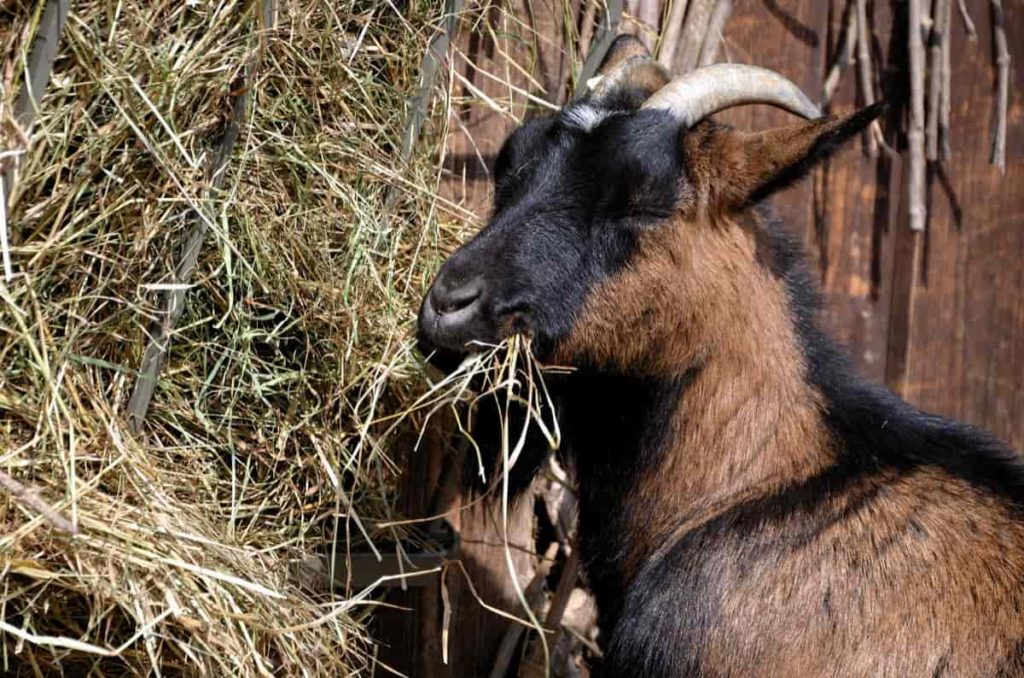
Tips for successful management of goats
- Follow regular deworming and vaccinations, do not wait for diseases to come. Local breed goats are best for the local market.
- Start farming with a veterinarian. Do not raise goats grazing on stall feeding farms and vice versa.
- Semi-intensive farming is the best method for goat farming. Start farming with local breeds and create your market channel for milk and meat instead of upgrading your breeds on the farm.
- Regular hygiene and good management practices are essential for maximum productivity. Work on existing goat farms for 15 days to a month before starting your goat farming unit.
- Visit the nearest local cattle market and take care of the demand, supply, and market of goats. Climate management is essential for better performance. Isolation and immediate treatment are essential to control the disease.
- Cultivation of fodder and fodder plants is the key to success in goat farming.
Tips for raising goats and maximizing profits
- Read about how to raise goats and do proper research and planning.
- Maintain good and strong health of your goats. Choose the right and high-yielding breed of goat for your business.
- Learn more information about goat farming from expert producers or the nearest livestock training center.
- Goats like to live in groups. So, make sure they have a large area so they can move around freely. All the equipment required for goat farms should be available.
- Ensure good breeding practices to produce better milk, meat and keep goats free from diseases. Give them plenty of clean water, food, and fresh grass according to their daily needs. Never feed goats contaminated food or contaminated water. Take more care of pregnant doe, breeding buck, and kids.
- Feed the buck extra nutrients during the mating season. See a veterinarian regularly (if possible) to improve your goat’s health. Give them salt and mineral water in the summer.
In case if you miss this: Goat Farming In The Philippines – Goat Breeds
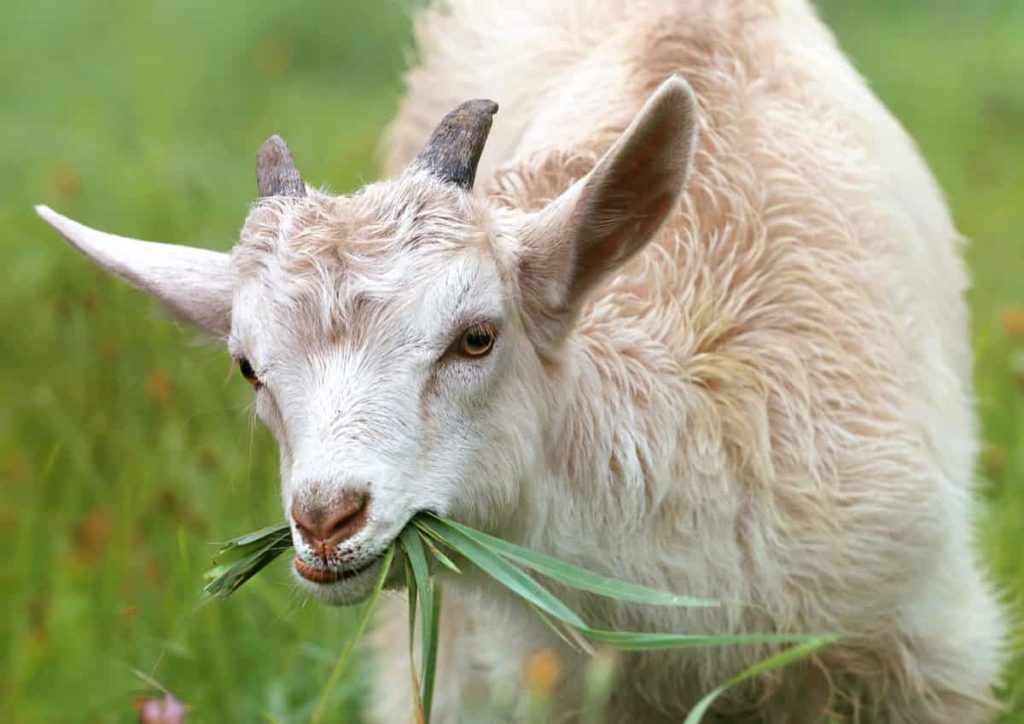
Health care tips in goat farming
- Sheds must be thoroughly washed and disinfected at least once a month. Food and water managers should clean regularly.
- Goats are at risk of endocrine infections. Therefore, deworming must be done once every six months. Kids are dewormed every month while does are killed just before the breeding season. Animals should be sprayed regularly with ectoparasitic drugs such as acaricides to avoid lice, ticks, mites, etc.
- Goats should be vaccinated from time to time against diseases like goat pox, plague, FMD, etc. Zoonotic diseases such as salmonellosis, brucellosis, etc. must be prevented because they are contagious and spread easily. Stray animals should not be allowed on the farm to prevent infection.
- Sick goats should be isolated as soon as the infection is detected and timely medication should be administered. Proper care is essential for raising goats. So, before you start a goat business, try to learn more about how to take care of goats.
Marketing tips
- In the goat farming business, the total expenses and profits depend on several elements like the farming system, location, breed, cost of food, and a few other factors. With good planning and proper management, the goat farming business can be easily made profitable. Firstly, small-scale farming requires less investment and profits can contribute to your regular income. On the other hand, commercial or large-scale production needs more investment and additional costs.
- Marketing is a challenging task in goat farming. Most of the time the farmer and the butcher will get the same margin. Farmers face a monopoly system because butchers are the only buyers. Sell goat’s milk and meat directly to consumers for better profits and profits. Those who are starting goat farming will get good margins by selling new farming units or new farmers. Don’t raise high-profile breeds for local butchers as they will buy at low cost which is detrimental and high-profile breeds require more care and feed input which increases production cost.
- Start farming with local breeds. Update the market and once you find a good market, update your breed on the farm. Create market channels in cities for milk and meat. Although, this is the easiest but most important part of commercial goat farming. So, now that all is well and you get a good product, it’s time to market your product. Firstly, try your local market, and then the major markets in your country. Only then can you test the international market.
- How to Make Houseplants Bushy: Effective Tips and Ideas
- Innovative Strategies for Boosting Coconut Pollination and Yield
- Pollination Strategies for Maximum Pumpkin Yield
- The Complete Guide to Chicken Fattening: Strategies for Maximum Growth
- Natural Solutions for Tulip Problems: 100% Effective Remedies for Leaf and Bulb-Related Issues
- Revolutionizing Citrus Preservation: Towards a Healthier, Greener Future
- Natural Solutions for Peony Leaf and Flower Problems: 100% Effective Remedies
- Maximizing Profits with Avocado Contract Farming in India: A Comprehensive Guide
- Natural Solutions for Hydrangea Problems: 100% Effective Remedies for Leaf and Flowers
- The Ultimate Guide to Choosing the Perfect Foliage Friend: Bringing Life Indoors
- From Sunlight to Sustainability: 15 Ways to Use Solar Technology in Agriculture
- The Ultimate Guide to Dong Tao Chicken: Exploring from History to Raising
- The Eco-Friendly Makeover: How to Convert Your Unused Swimming Pool into a Fish Pond
- Mastering the Art of Delaware Chicken Farming: Essentials for Healthy Backyard Flocks
- 20 Best Homemade Fertilizers for Money Plant: DIY Recipes and Application Methods
- How to Craft a Comprehensive Free-Range Chicken Farming Business Plan
- Brighten Your Flock: Raising Easter Egger Chickens for Beauty and Bounty
- How to Optimize Your Poultry Egg Farm Business Plan with These Strategies
- Subsidy for Spirulina Cultivation: How Indian Government Schemes Encouraging Spirulina Farmers
- Ultimate Guide to Raising Dominique Chickens: Breeding, Feeding, Egg-Production, and Care
- Mastering the Art of Raising Jersey Giant Chickens: Care, Feeding, and More
- Ultimate Guide to Raising Legbar Chickens: Breeding, Farming Practices, Diet, Egg-Production
- How to Raise Welsummer Chickens: A Comprehensive Guide for Beginners
- How to Protect Indoor Plants in Winter: A Comprehensive Guide
- Ultimate Guide to Grow Bag Gardening: Tips, Tricks, and Planting Ideas for Urban Gardeners
- Guide to Lotus Cultivation: How to Propagate, Plant, Grow, Care, Cost, and Profit
- Agriculture Drone Subsidy Scheme: Government Kisan Subsidy, License, and How to Apply Online
- Ultimate Guide to Raising Araucana Chickens: Breed Profile, Farming Economics, Diet, and Care
- Bringing Hydroponics to Classroom: Importance, Benefits of Learning for School Students
- Ultimate Guide to Raising Polish Chickens: Breed Profile, Farming Economics, Diet, and Care
- Ultimate Guide to Raising Australorp Chickens: Profile, Farming Economics, Egg Production, Diet, and Care
- Silkie Chicken Farming: Raising Practices, Varieties, Egg Production, Diet, and Care
- Sussex Chicken Farming: Raising Practices, Varieties, Egg Production, Diet and Care
- Homemade Feed Formulations for Livestock: Discover Cost-effective Starter to Finisher Feed Recipes
- 20 Best Pig Weight Gain Supplements: Top Swine Weight Gain Formulas
- Ultimate Guide to Elderberry Farming: Propagation, Planting, Yield, Cost, and Profit
Good advice for person who wants to start rearing goats
fantastic i learnt a lot